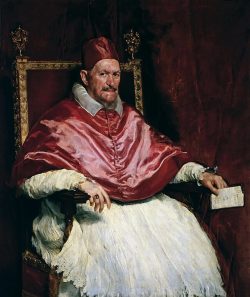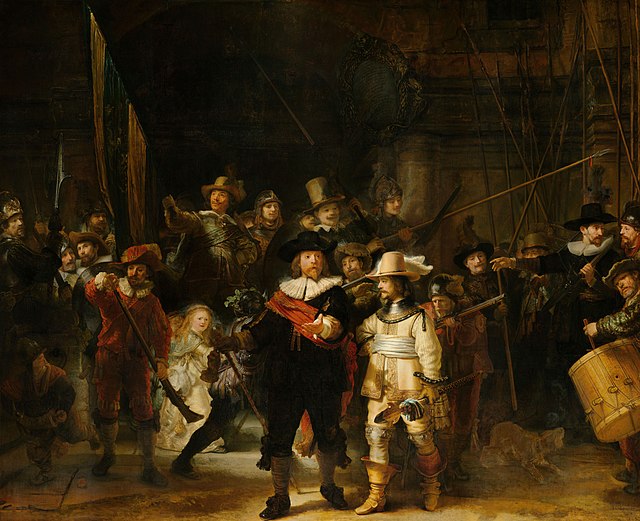What is the purpose of portraiture?
In 2019, British artist Sarah A Boardman was commissioned to paint a portrait of Donald Trump for the Colorado state capitol building in Denver. The portrait was first presented to the public in August 2019 and remained there for six years. It has recently been removed following Trump’s criticism of the portrait on his social media platform “Truth”, where he attacked Boardman and her piece, claiming that the portrait had been “purposefully distorted” and she “must have lost her talent as she got older”. Boardman has publicly defended herself, saying that she completed the piece without “political bias, or any attempt to caricature the subject, actual or implied”. The treatment of the portrait raises a wider artistic question, which is: should artists only depict what a subject looks like or should they consider the actions and personality of a subject when creating a portrait? Even if Boardman’s portrait can be read as a criticism of Trump, was he correct in removing it from display, thereby essentially censoring her work?
This portraiture does not only present the obvious, like a subject having a poor combover, but it allows a viewer to peek behind the canvas and engage with ideas beyond the superficial
The best art is fully engaged with our reality. To fully engage with reality, a portrait cannot only depict what is obviously there; instead, the portrait must have depth. By depth I mean the ability to provoke multiple, even contradictory interpretations. This portraiture does not only present the obvious, like a subject having a poor combover, but it allows a viewer to peek behind the canvas and engage with ideas beyond the superficial. Whether the artist intended these ideas is neither here nor there. It is the possibility of finding alternative meaning which can make a piece of art so compelling.
Diego Velázquez’s ‘Portrait of Pope Innocent X’ is often considered one of the greatest portraits in the western canon because of its depth. It is not only an accurate visual representation of Pope Innocent, but the portrait allows a viewer to understand his human characteristics. The shift from depicting idealised symbols to depicting realistic humans had already taken place in the early 15th century, but Velázquez mastered the technique in his portrait of Pope Innocent. In the portrait, Pope Innocent’s face is contradictory: his eyes are considered and hospitable while his mouth subtly frowns. He faces the viewer as if surveying their innocence. The portrait uses the papal red and a throne to convey the authority of Pope Innocent, but the contrast between the accoutrements and his ageing appearance highlights both the burden and the temporality of his position. It is said that after seeing the portrait for the first time, Pope Innocent exclaimed “È troppo vero!” (It’s too real!). To me, his reaction does not reflect the portrait’s visual accuracy but rather it conveys the piece’s depth, which holds a mirror up to our reality. Famously, Francis Bacon reacted in a very different way.

‘Portrait of Pope Innocent X’ by Diego Velázquez
By including himself as a character and subverting the generic expectations of the militia portrait, Rembrandt allows the possibility of alternative interpretation
Rembrandt’s ‘The Night Watch’ (1642) has depth. It was commissioned in 1639 by Captain Bannick Cocq and 17 members of the civic militia guards. The militia portrait was a typical style of 17th century Dutch painting. The group were typically static and arranged in a linear fashion, with all paying members depicted equally. Rembrandt’s painting undermines these conventional tropes. In his piece all the militia guard are in motion, with some pushed to the darker edges of the canvas, and it seems that no subject is aware of their presence in the painting. The chaos the portrait creates draws the viewer in as it allows the militia guard to be challenged. Rembrandt includes himself as a character – a small head can be seen behind the group with a single eye watching on. His glaring stare mirrors that of the audience, who can view and judge the militia. By including himself as a character and subverting the generic expectations of the militia portrait, Rembrandt allows the possibility of alternative interpretation. Peter Greenaway’s 2007 film Night Watching demonstrates this, he uses the subversive elements of the piece to justify a storyline which centres around Rembrandt exposing the civic militia guards for child prostitution and murder.

‘The Night Watch’ by Rembrandt
Portraiture must do more than provide a clear visual representation of a subject. To be a good portrait there must be depth
Trump’s criticism of his own portrait was misplaced, as the purpose of portraiture is not to accurately depict a subject but to inspire a reaction in a viewer. Boardman’s painting possesses subtle depth. She depicts Trump with narrowing eyes and a pouting mouth, making his facial expression feel forced as if he is trying to seem intellectual. Portraiture must do more than provide a clear visual representation of a subject. To be a good portrait there must be depth. If 1000 people see a portrait and have the same interpretation, that portrait has failed as a work of art.

Comments